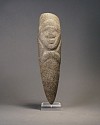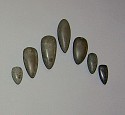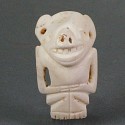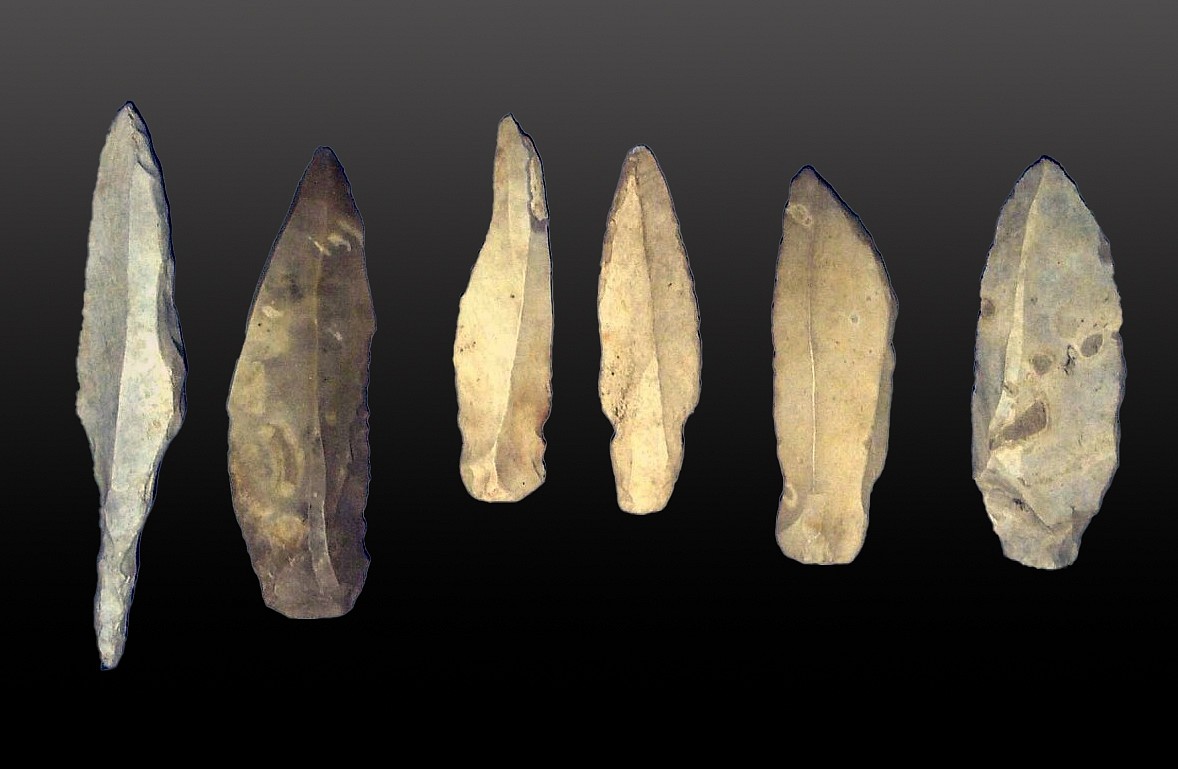
Dominican Republic, Group of 6 Neolithic Taíno Xillex Blades
This type of sharp flaked stone tool is categorized as Casmirian, and precedes the more complex Courian blades of stone, bone, and shell. These bifacial napped tools were fashioned into hide scrapers, circular knives, spoons, knife blades, or spear heads, and were probably used to kill and butcher animals.^
Period: Dominican Republic, Taíno, Neolithic, c. 1000 - 400 BC
Media: Stone
Dimensions: Length: Longest: 10 1/2"; Shortest: 5"
$2,500
MM017G
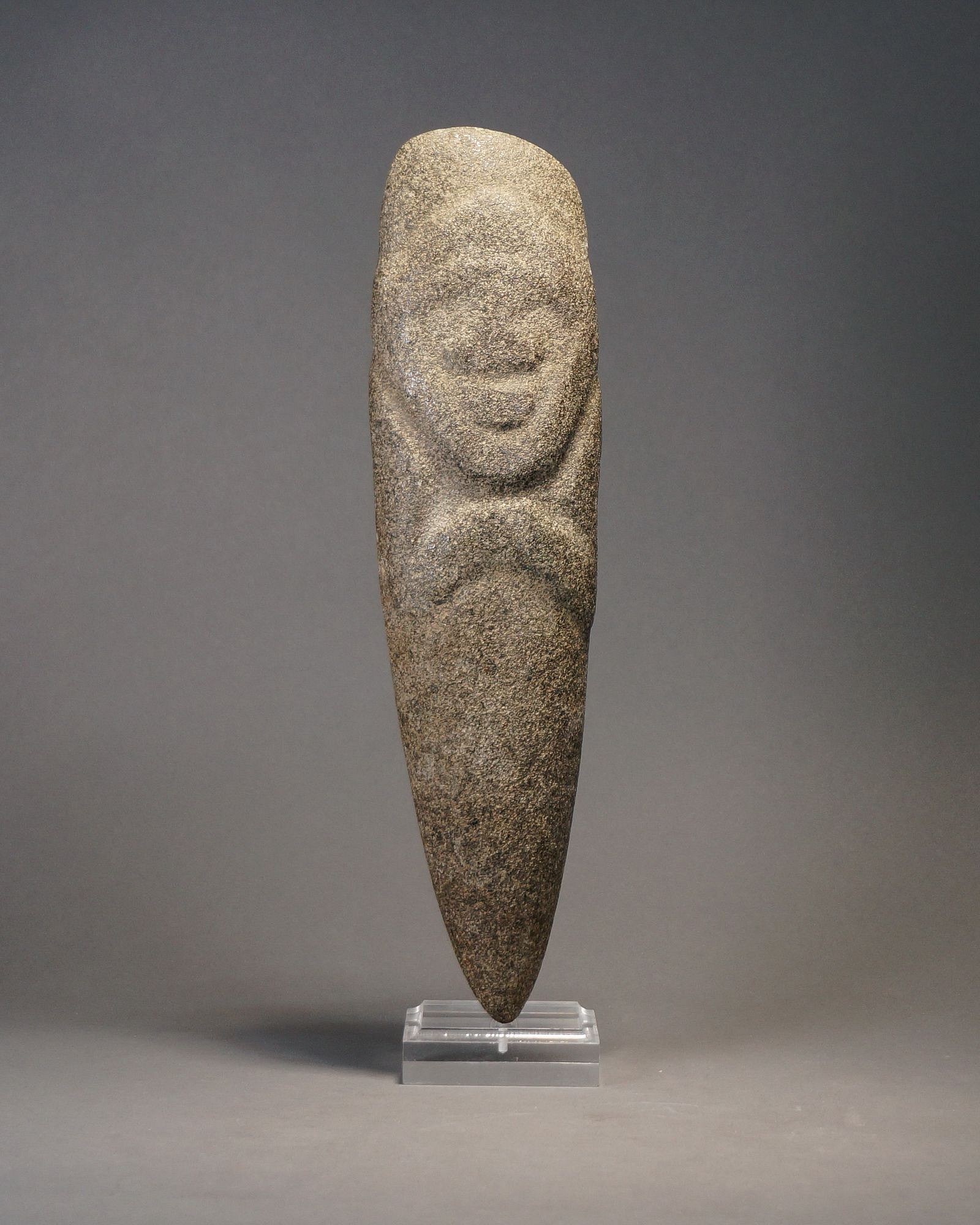
Dominican Republic, Large Taíno Celt Carved with a Face
This ceremonial celt features a deity face, cone-shaped headdress, and hands held to stomach. See Herrera, p. 140-144.^
Period: Dominican Republic, Taíno, Early Classic Period, c. AD 600 - 1000
Media: Stone
Dimensions: Length 12" x 3" (30cm x 8cm)
Price Upon Request
N1042
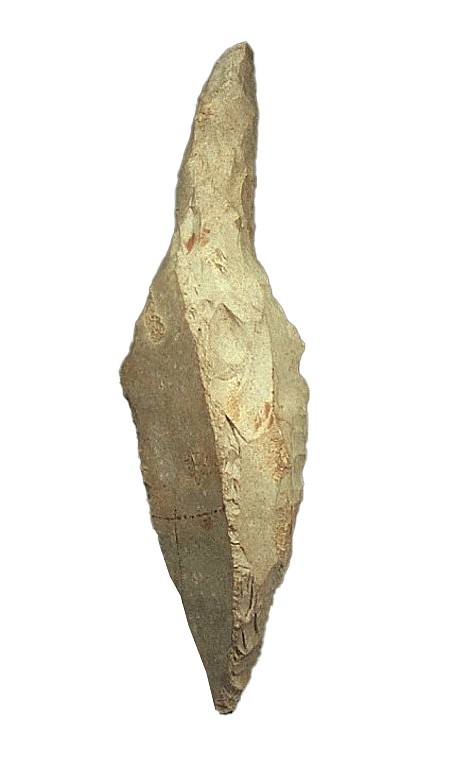
Dominican Republic, Neolithic Taíno Flaked Stone Dagger with Very Sharp Point
This type of flaked stone tool has been assigned to the Courian subseries and belongs to the same tradition of flaked-stone working in which the artisans collected fine grained rocks and struck them with hammerstones to chip off a succession of irregularly shaped flakes. These tools were probably used to kill and butcher animals.^
Period: Dominican Republic, Courian Subseries, c. 2000 BC - AD 250
Media: Stone
Dimensions: Length: 9"
$675
MM028
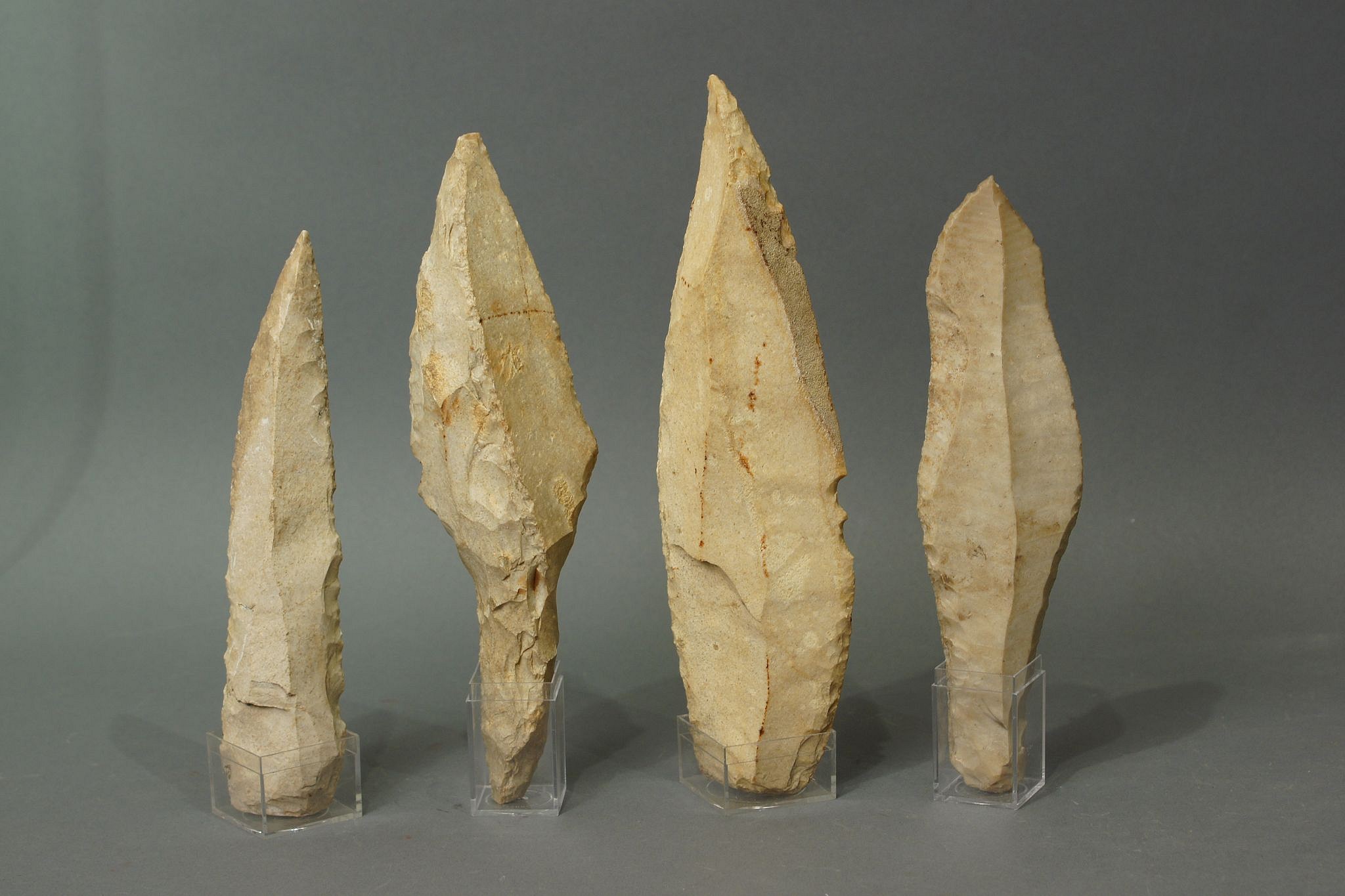
Dominican Republic, Neolithic Taíno Group of Four Xillex Stone Daggers
These are flaked, xillex stone dagger type implements. This type of flaked stone tool has been assigned to the "Courian subseries" (Rouse, 1992, p55). It is characterized by an elaboration on the "Casimiran" (Casimiran refers to a period during the Lithic age - 4000-400BC and is used only to describe artifacts found on the two largest Caribbean islands of Cuba and Hispaniola) tradition of flaked-stone working in which the artisans collected fine grained rocks and struck them with hammerstones to chip off a succession of irregularly shaped flakes. These tools fashioned into knife blades were probably used to kill and butcher animals. Illustrated examples of flaked stone daggers are discussed in Rouse, Irving, "The Taínos: Rise and Decline of the People Who Greeted Columbus", Yale University Press, 1992, Fig. 16.
Period: Dominican Republic, Courian Subseries, c. 2000 BC - AD 250
Media: Stone
Dimensions: B: 8 1/2"; C: 7 5/8"; D :6"; E: 5 1/2"
Price Upon Request
MM002
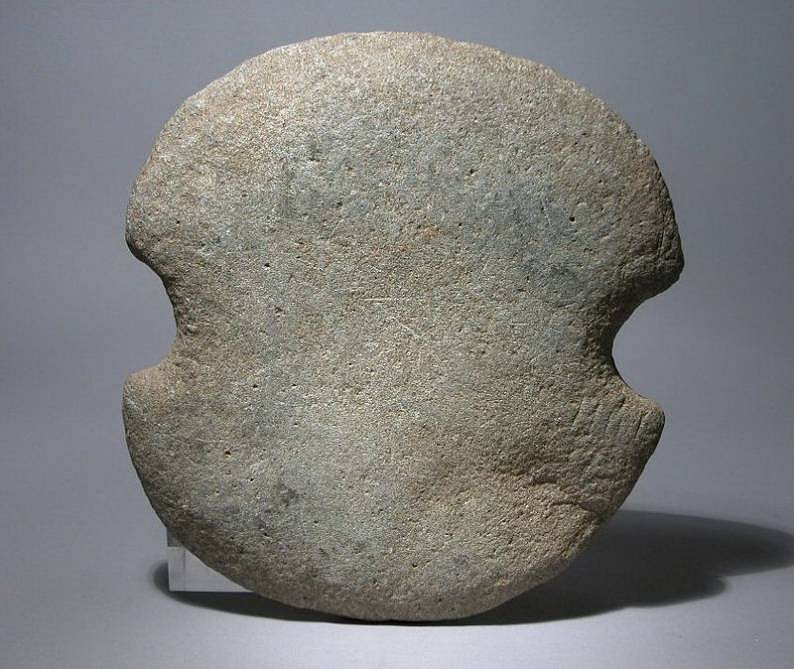



Dominican Republic, Pre-Taino Stone Double-Bitted Axe
This type of large, worked stone double-bitted axe can be assigned to the "Courian Subseries," a classification designating the period that ended some time just after the Lithic Age and just before the Ceramic Age. These large axe heads, used in combat, were strapped to a large staff with strips of leather. A similar example is illustrated and discussed in Irving Rouse’s "The Tainos: Rise and Decline of the People Who Greeted Columbus,†Yale University Press, 1992, pg. 56, fig.16d. With some natural wear.
Period: Dominican Republic, Courian Subseries, circa 2000BC-AD250
Media: Stone
Dimensions: Width 7"
$2,250
94312
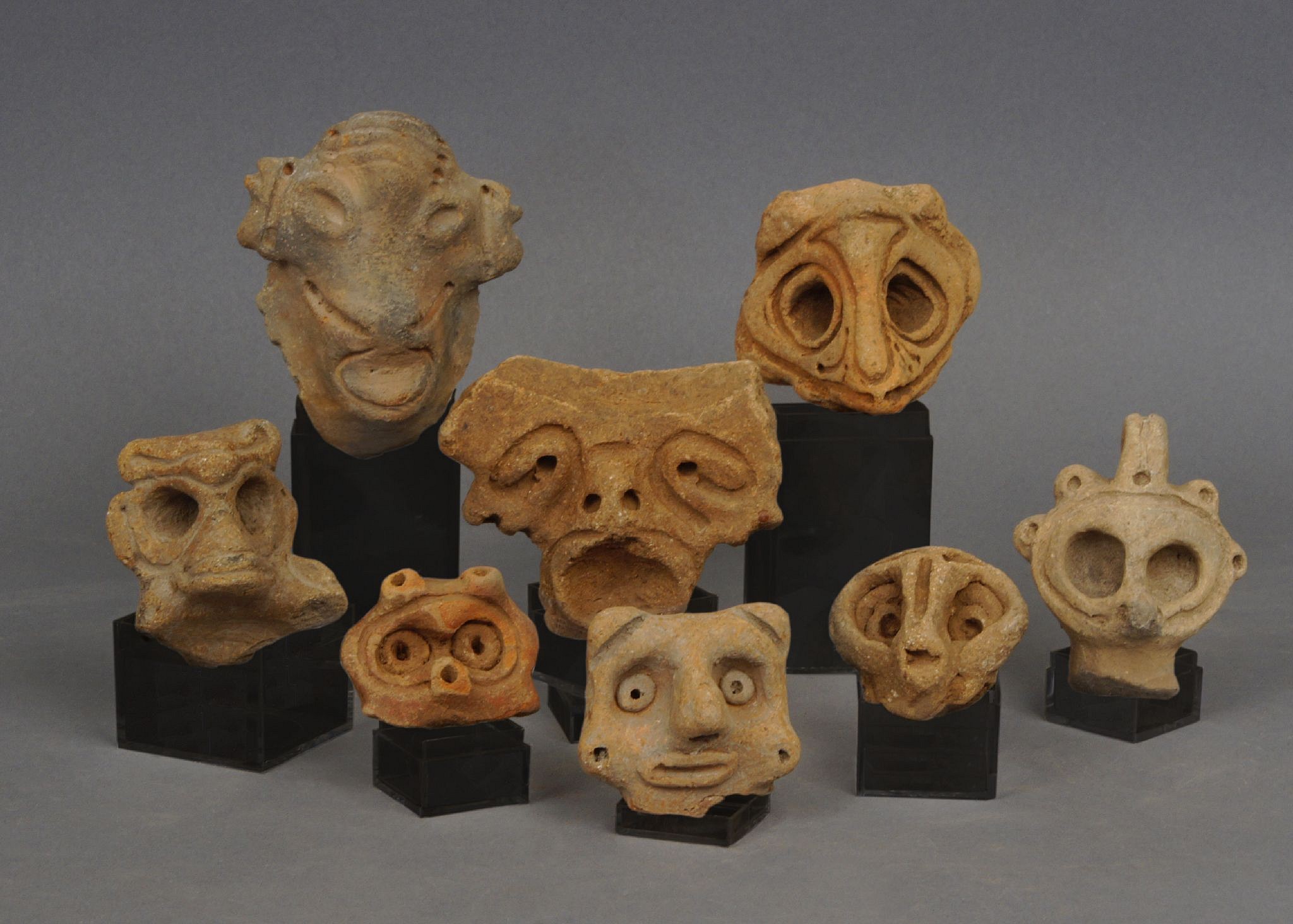
Dominican Republic, Set of 8 Taíno Ceramic Anthropomorphic Faces
These heads were used as adornos (decorative handles) on ceramic plates and bowls.
Period: Dominican Republic, Taíno, c. AD 1000 - 1500
Media: Ceramic
Dimensions: Approximately. 1-3†in height.
$1,200
99450
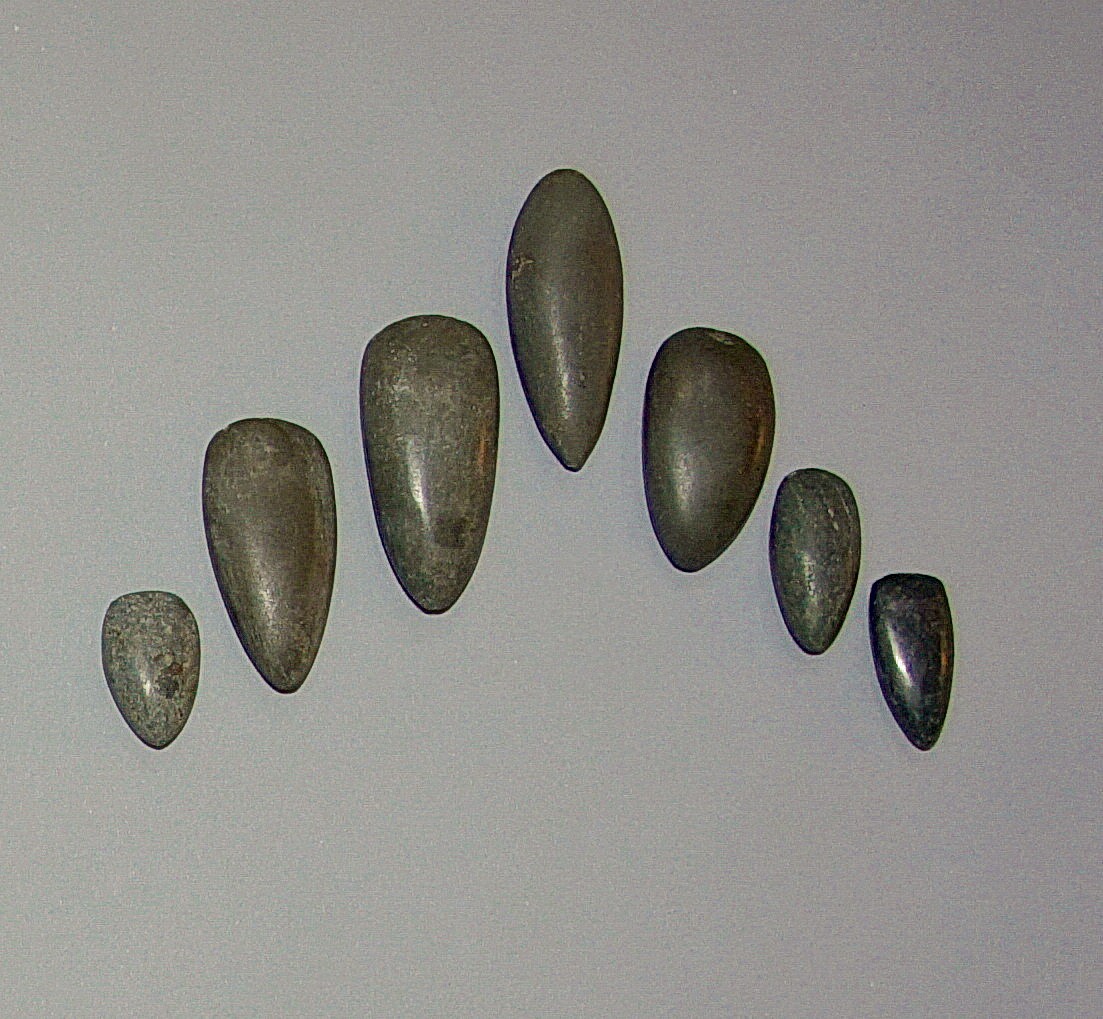
Dominican Republic, Seven Small Dark Greenstone Celts as Tools
Ranging in shape from oblong to petaloid, these stones were used as tools for fine work. The varied shapes allowed for fine work a variety of sizes of amulets.
Period: Dominican Republic, Taíno, Early Classic Period, c. AD 600 - 1000
Media: Stone
Dimensions: Length: 1 1/4" to 2 7/8"
$1,500
99454
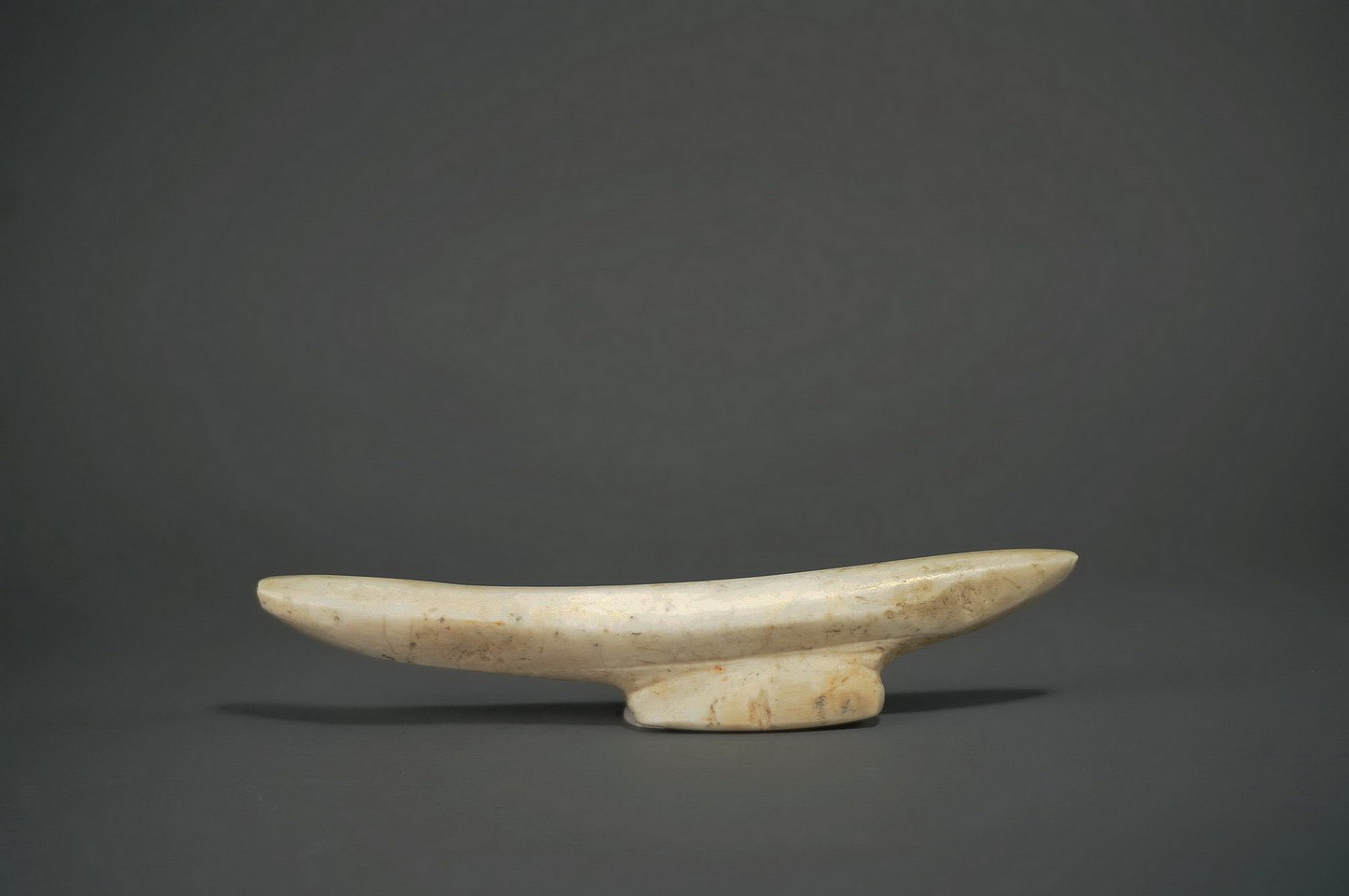






Dominican Republic, Shell Dagger from the Estate of Fred Olsen
This dagger is illustrated in ON THE TRAIL OF THE ARAWAKS by Fred Olsen, p.192. Olsen explains that "repeated handling shows that the object best fits the hand as a dagger, with the index finger placed over the protuberance to guide a powerful down stroke." He also states that it was cut from the lip of a conch shell and finished with a sharp point. The dagger resembles the form of an abstract animal, likely the anteater (Tamandua T. tetradactyla), which is found on Antigua. Fred Olsen collection, by descent to his grandson prior to 1967.
Period: St Johns, Antigua c. AD 900-1300
Media: Shell
Dimensions: Length: 9"
$5,750
n9028
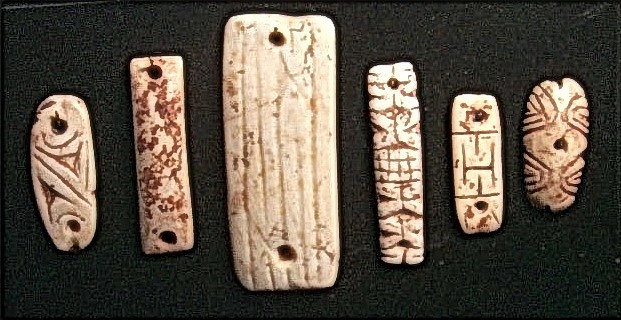
Dominican Republic, Six Taíno Bone and Shell Bracelet Elements
These ornaments have two drilled holes at either end. They were used as either bracelet elements or necklace clasps. It is hard to find shell ornaments with such good patina still intact.
Period: Dominican Republic, Taíno, c. AD 1000 - 1500
Media: Other
Dimensions: From left: 1 1/4, 1 3/4", 2.5", 1.5", 1 1/4", 1"
$1,200
98372B
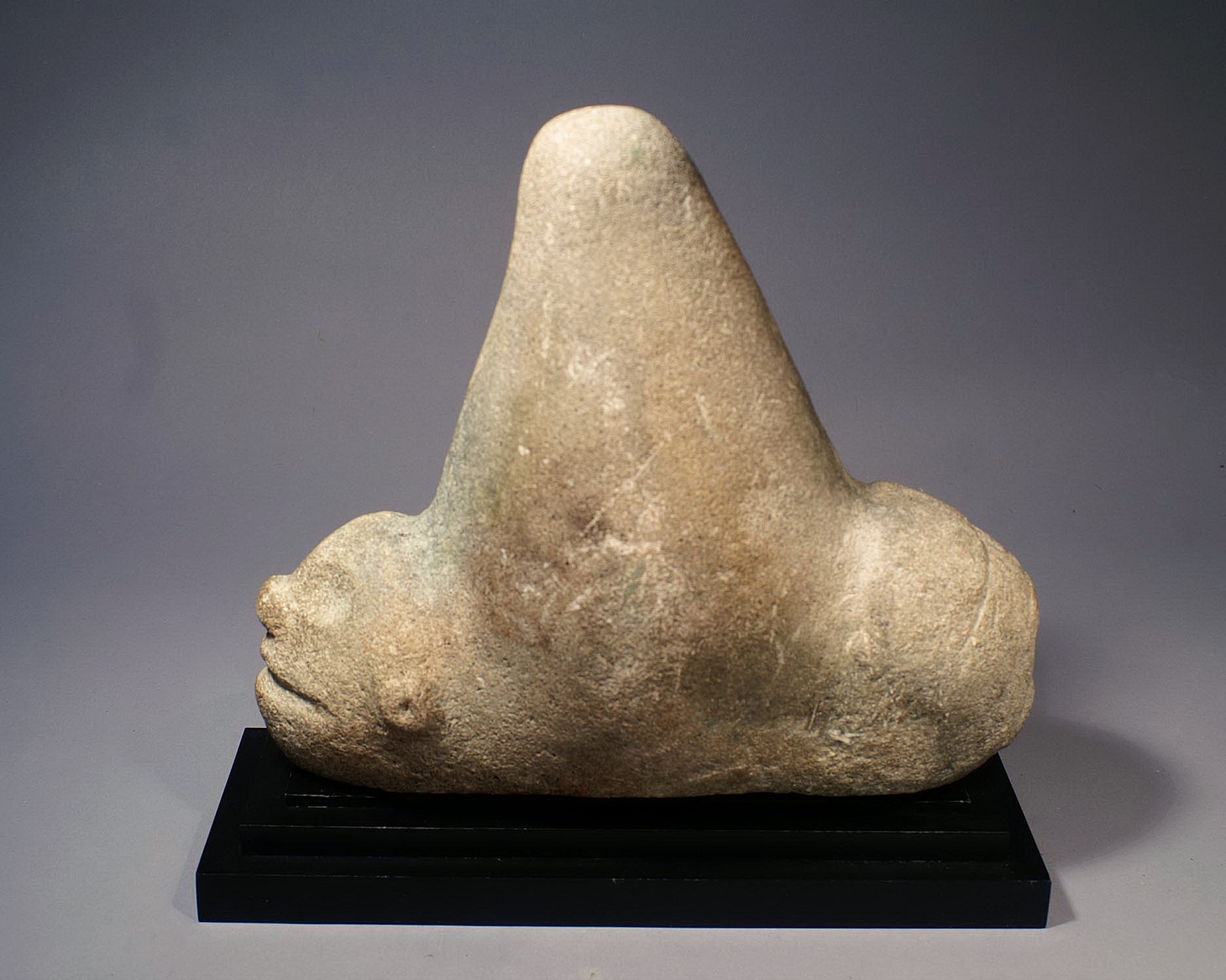
Dominican Republic, Taino Stone Three-pointer of Yúcahu, the Supreme Spirit
Three pointed stones are unique to the Caribbean. Also known as zemis, they are symbolic of the spirit realm and the forces that imbue life with fertility. The large cone represents the primordial mountain rising from the ocean. This three-pointer portrays a zoomorphic figure with a crowned face and curled hind legs. The bat-like nose, which often occurs on three-pointers, has been identified as Yucahu, Lord of the Sky. Yucahu is the patron spirit of Yucca, the staple crop of TaÃno agriculture. Large three-pointers belonged to elites and chiefs. The three-pointers were believed to bestow power, wisdom and a connection to the spiritual world on their owner. This three-pointer is carved of soft sandstone. The surface has been weathered by time. The tall cone and lack of detail indicate that this piece is from an earlier period prior to the Classic TaÃno Period.
Period: Dominican Republic, Taíno, c. AD 1000 - 1500
Media: Stone
Dimensions: Length: 10" x Height: 9 1/2"
$22,000
M3055
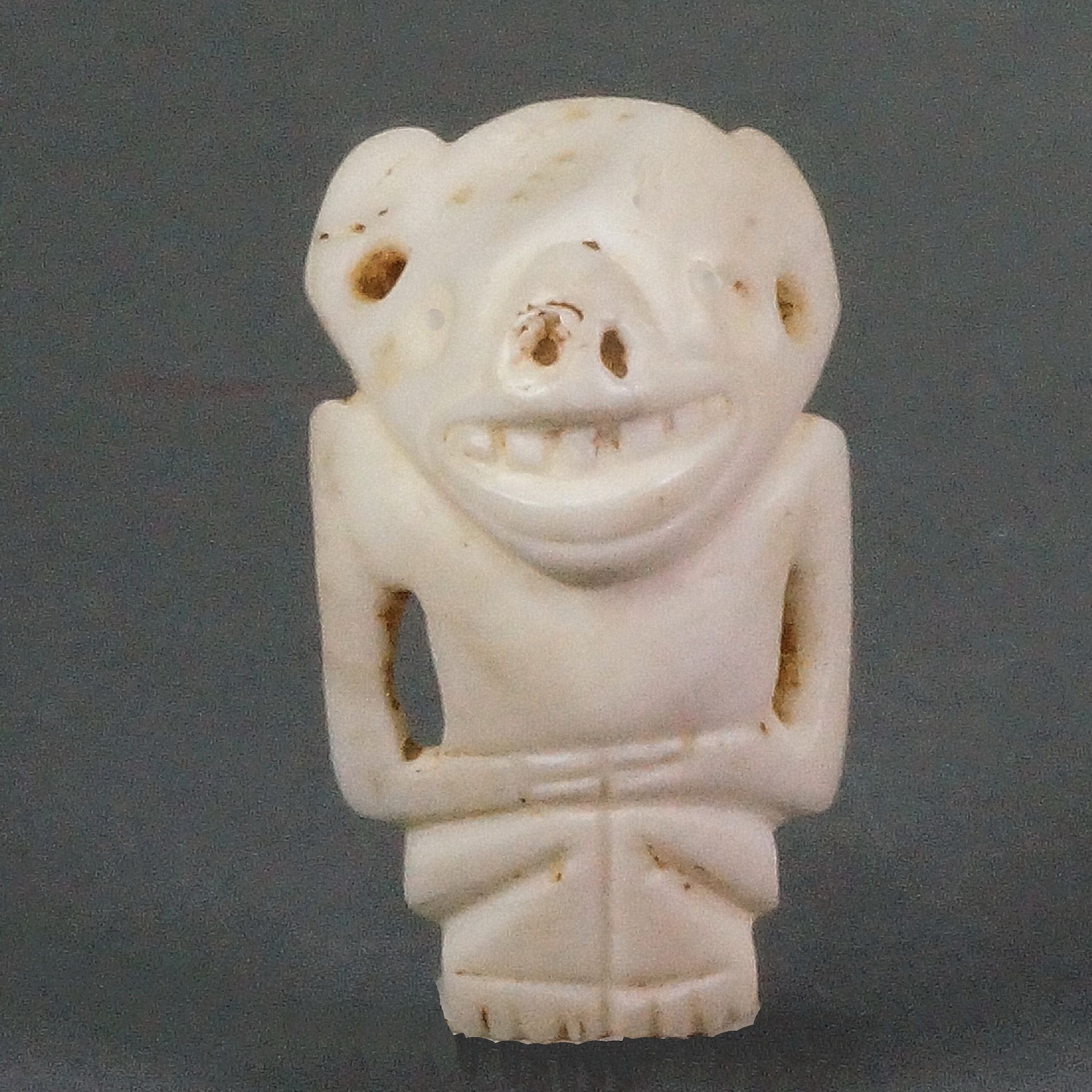
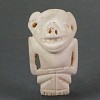
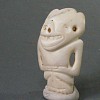
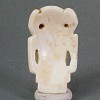
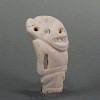
Dominican Republic, Taíno Carved Shell Amulet of a Figure with a Bat Face
This bat deity amulet features a stylized human figure with bat-like features, such as large ears and a pug nose. There are two suspension holes below each ear. This amulet was likely originally the central bead on a larger beaded necklace.
Period: Dominican Republic, Taíno, c. AD 1000 - 1500
Media: Shell
Dimensions: Height: 1 1/2"
$2,250
98149
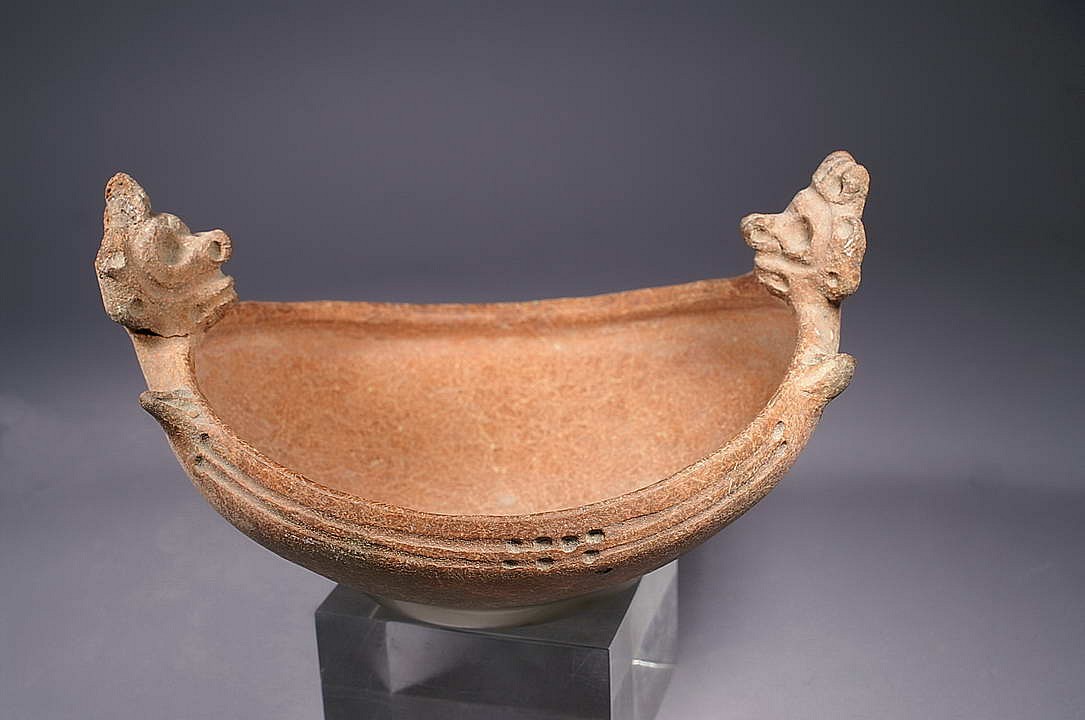



Dominican Republic, Taino ceramic rose-orange bowl with Anthropomorphic Head Adornos
This is a particularly well-crafted ceramic vessel, fired at high temperatures. The two Adorno heads at either end clearly represent a zoomorphic bat, indicated by the winged shoulders at the rim.
Period: Dominican Republic, Taino, c. AD 1000 - 1500
Media: Ceramic
Dimensions: Width: 7 1/2"x Height: 3 3/4"
Condition: Very good. One Adorno was broken at the neck and re-attached. All parts original.
Price Upon Request
MM003
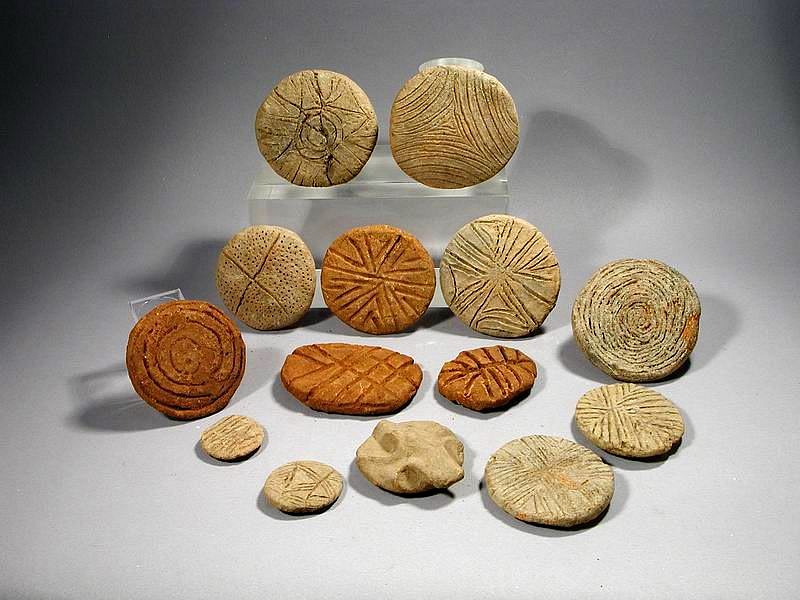
Dominican Republic, Taíno Group of 14 Round Ceramic Seals or Stamps
This eclectic group of ceramic seals of is decorated with various geometric designs, one with zoomorphic motif (frog or bat) on the grip. The Taíno dipped these stamps in pigments made from crushed bija and jagua seeds and then imprinted them on their own skins for ceremonial events. Similar examples are illustrated in "Altos de Chavon", p. 28.
Period: Dominican Republic, Taíno, c. AD 1000 - 1500
Media: Ceramic
Dimensions: Largest diameter: 3"
smallest diameter: 1 1/4"
$900
99155
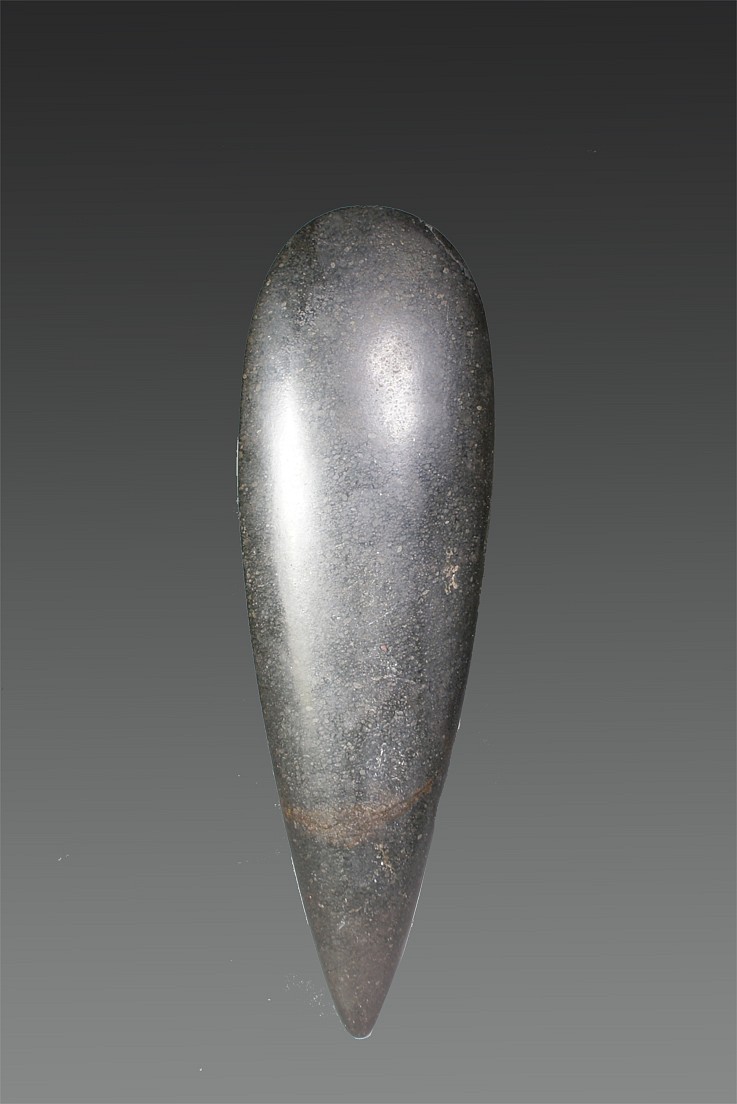
Dominican Republic, Taino Large Black Petaloid Celt
The smoothly polished surface and finely tapered teardrop form of this petaloid stone celt indicates that it was intended as a ceremonial object. The term "petaloid" refers to the elongated flower petal likeshape. Similar examples are illustrated in "Taino: Art and Culture from the Caribbean", NY, Museo del Barrio, 1998, Fig. 24.
Period: Dominican Republic, Taino, c. AD 1000 - 1500
Media: Stone
Dimensions: Length: 10" x Width: 3"
$3,750
MM016
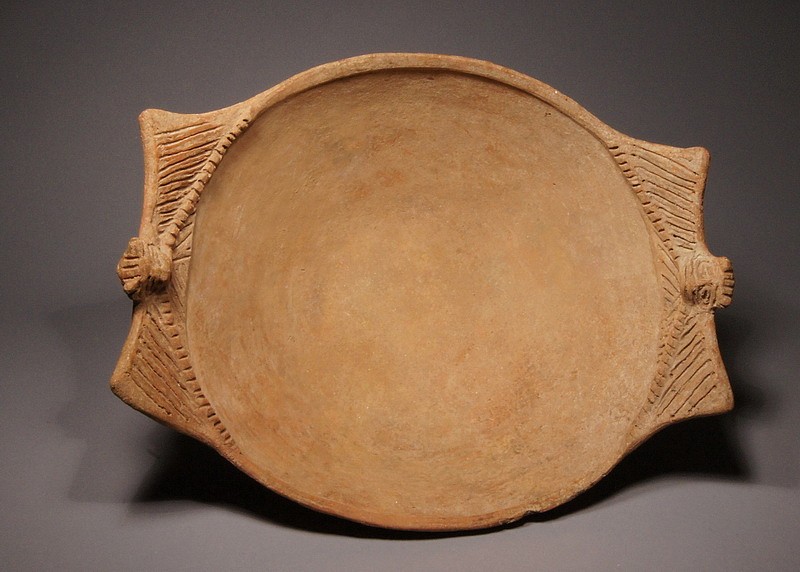





Dominican Republic, Taino Large Ceramic Vessel with Winged Bats
Large feasting bowl. The Taino and their predecessors held large festivals in the plazas of their communities, in which singing, dancing and ballgames could last for days. Part social and part ritual, shamans and chiefs would go into trances to communicate with spirits and ancestors during festivals. The bat is a common motif in Taino art and symbolized spirits and ancestors in the otherworld. This particular type of vessel is found in the Dominican Republic. A similar vessel with flaring winged bats from the collection of the Fundacion Garcia Arevalo is illustrated in "El murcielago y la lechuza en la cultura taina" (1988: 8).
Period: Dominican Republic, Taino, Classic Period, circa AD1000-1500
Media: Ceramic
Dimensions: Height: 5" x Diameter: 11" inches
$7,500
99524
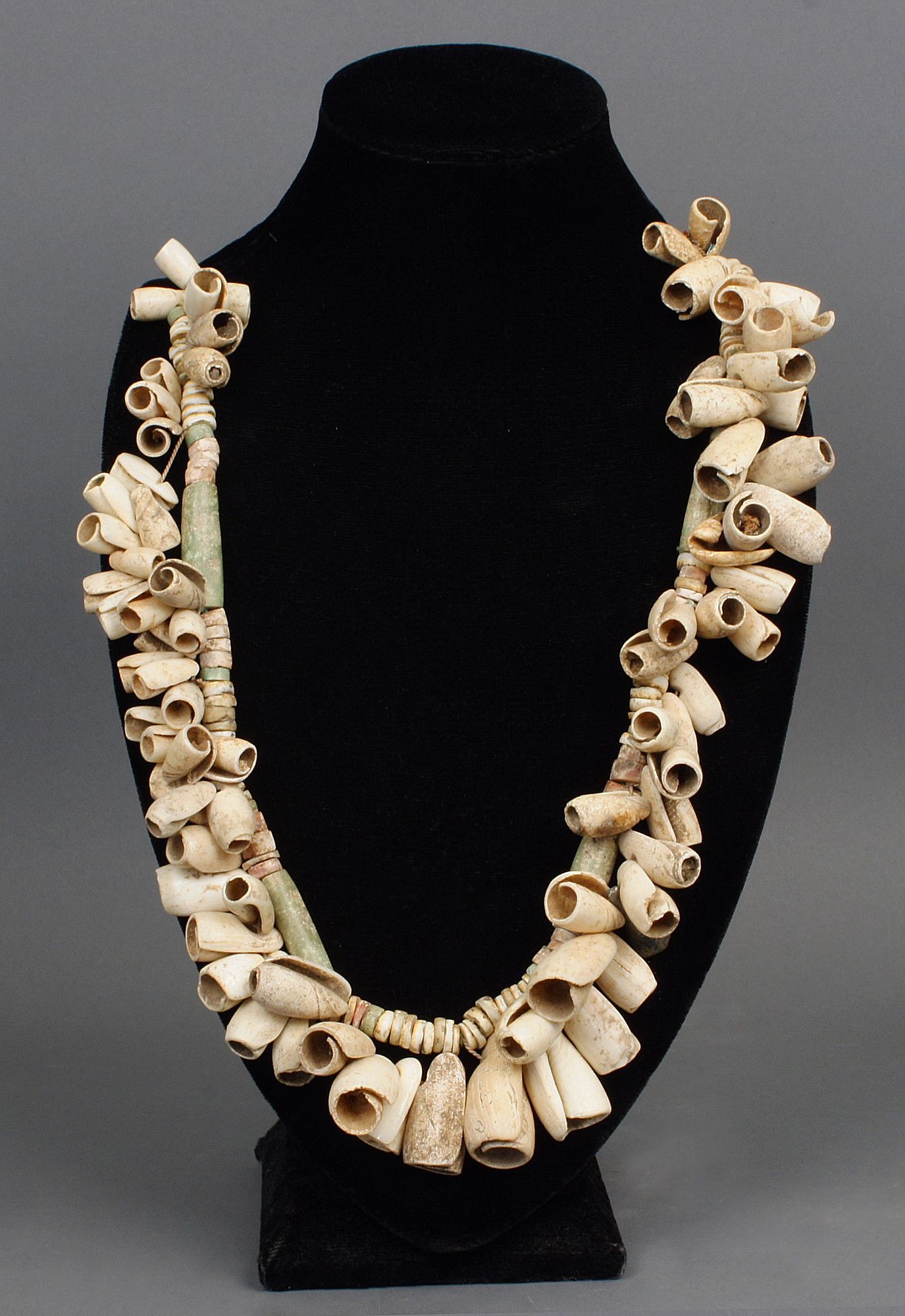
Dominican Republic, Taíno Necklace Composed of Operla Snail Shells
These cone snail (gastropoda Conidae) shells were by the ancient Taíno as beads and would have been worn on necklaces by people of high wealth and status. The beads are ancient, but this necklace is modern assembled, with a design that resembles an ancient necklace.
Period: Dominican Republic, Taíno, c. AD 1000 - 1500
Media: Shell
Dimensions: Length: 21"
$3,500
99376
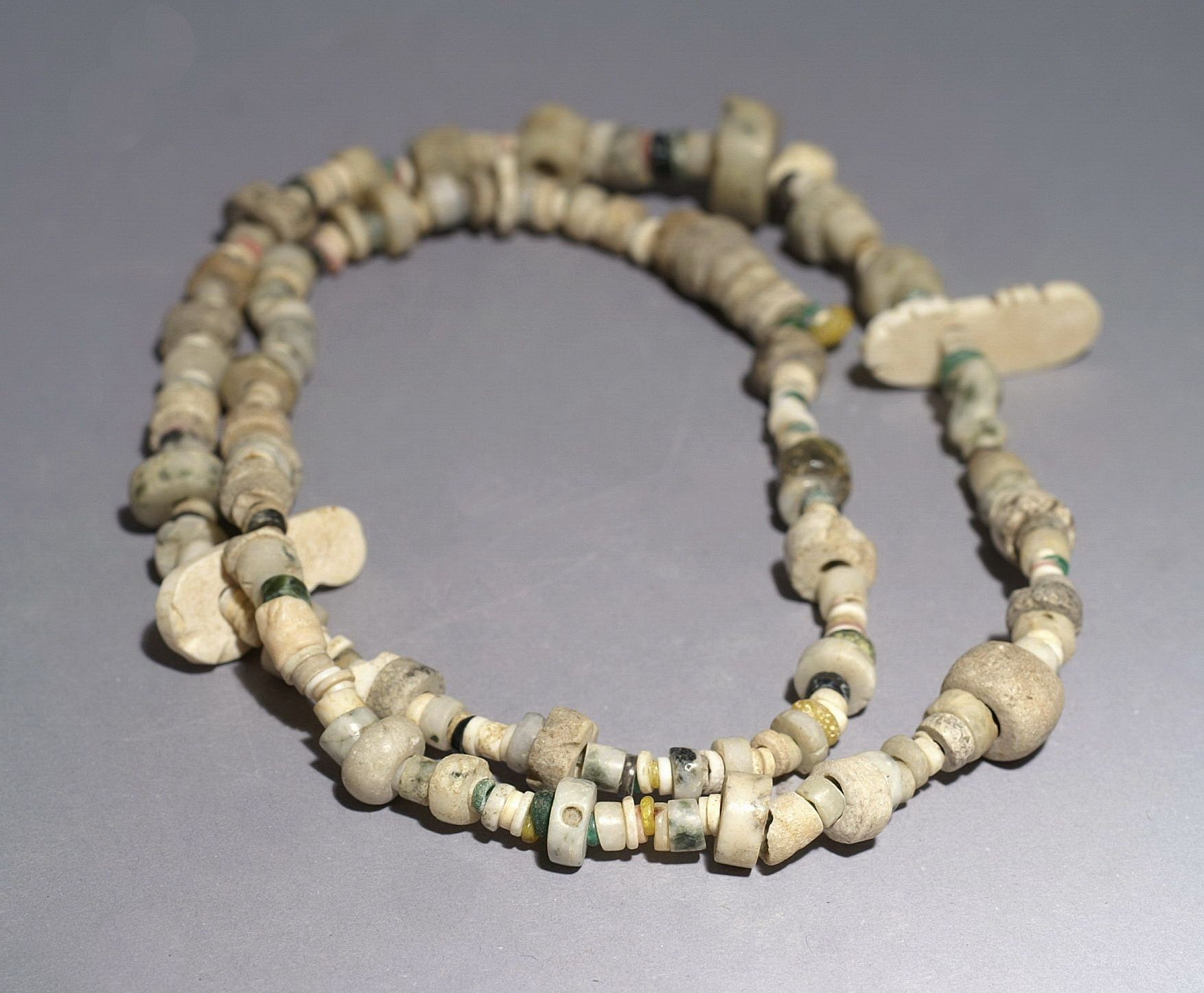
Dominican Republic, Taíno Necklace with a Variety of Carved Discoidal Shell and Stone Beads
The shell and stone beads in this necklace are varied in size, material, and color, including several rare miniature turquoise beads. There are several carved shell beads known as llaves, or key-shaped forms. All the stones were drilled and polished. The TaÃno artists were known for their miniature stone works, including beads, amulets, axes, and even miniature three-pointers (zemis).
Period: Dominican Republic, Taíno, c. AD 1000 - 1500
Media: Stone
Dimensions: Necklace Length: 26" Beads range in diameter: 1/10" to 1/2"
$1,500
99391
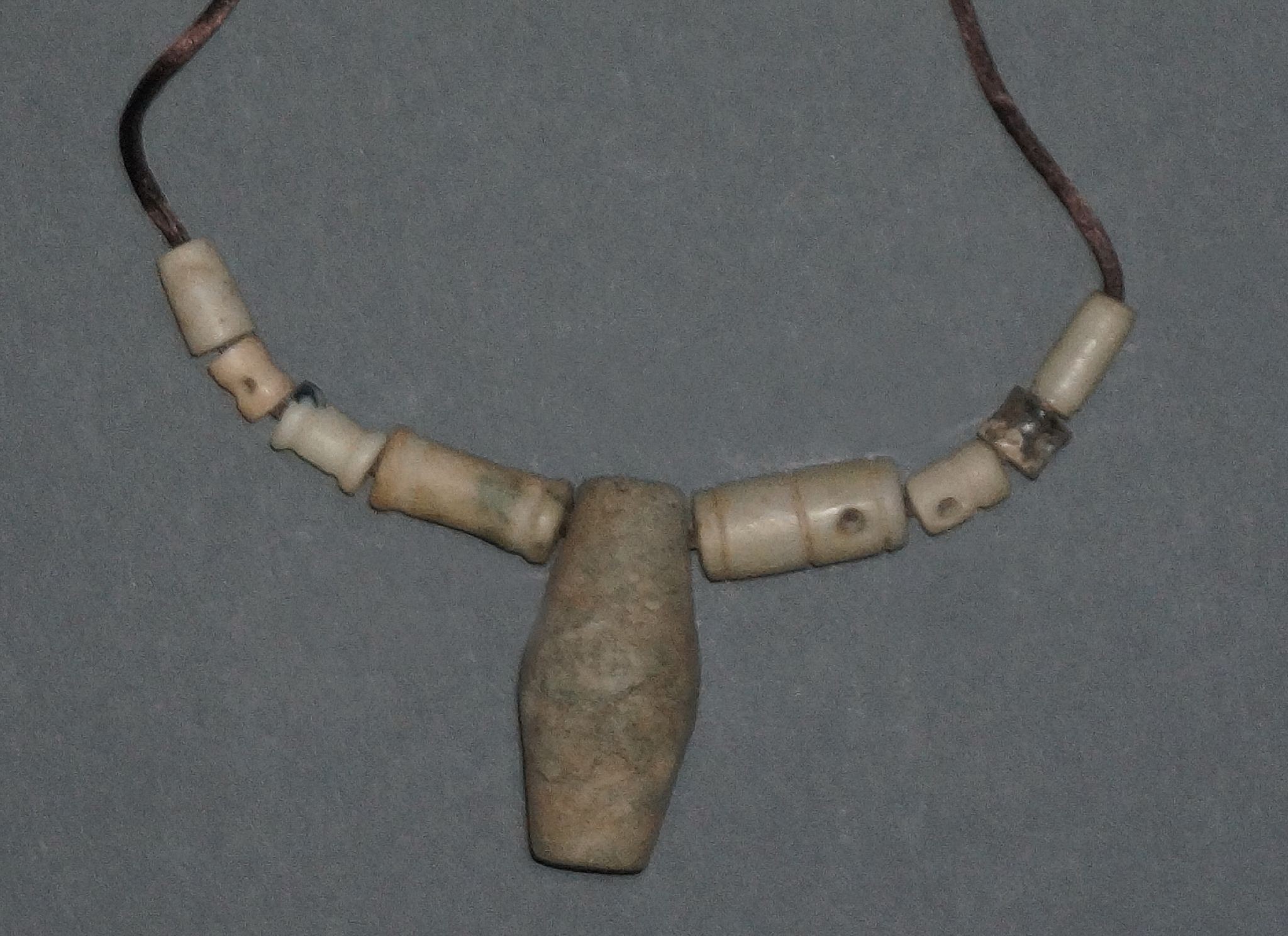
Dominican Republic, Taíno Necklace with Nine Carved Stone Beads in Varying Sizes
Necklace of nine TaÃno carved stone cylindrical beads in a variety of sizes. It took great skill to drill long holes and sometimes even greater skill for small stones, as they often break in the drilling process.
Period: Dominican Republic, Taíno, c. AD 1000 - 1500
Media: Stone
Dimensions: Lenght: 1/4" to 2"
$900
99379
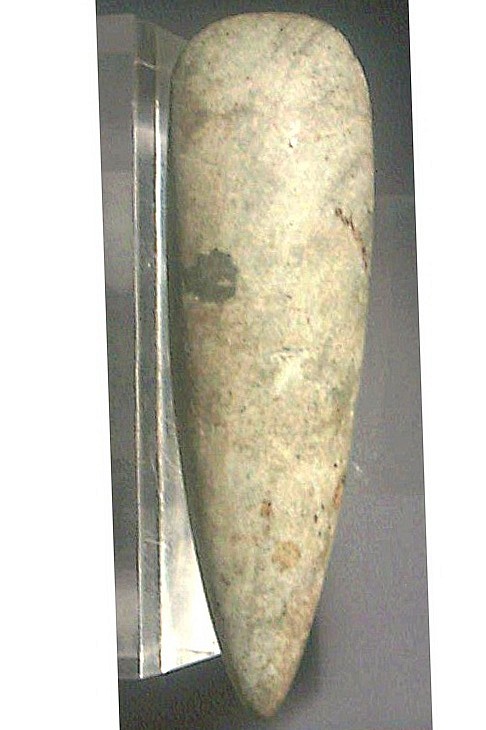
Dominican Republic, Taíno Petaloid Celt
This celt is made of slender light gray hued stone with swirled and spotted surface carved into petaloid form. Good examples of petaloid stone celts are illustrated in "Taíno: Pre-Columbian Art & Culture From the Caribbean", Museo del Barrio, 1998, Fig. 24.
Period: Dominican Republic, Taíno, c. AD 1000 - 1500
Media: Stone
Dimensions: Length:6 3/4" x Width: 2"
$6,500
MM052C
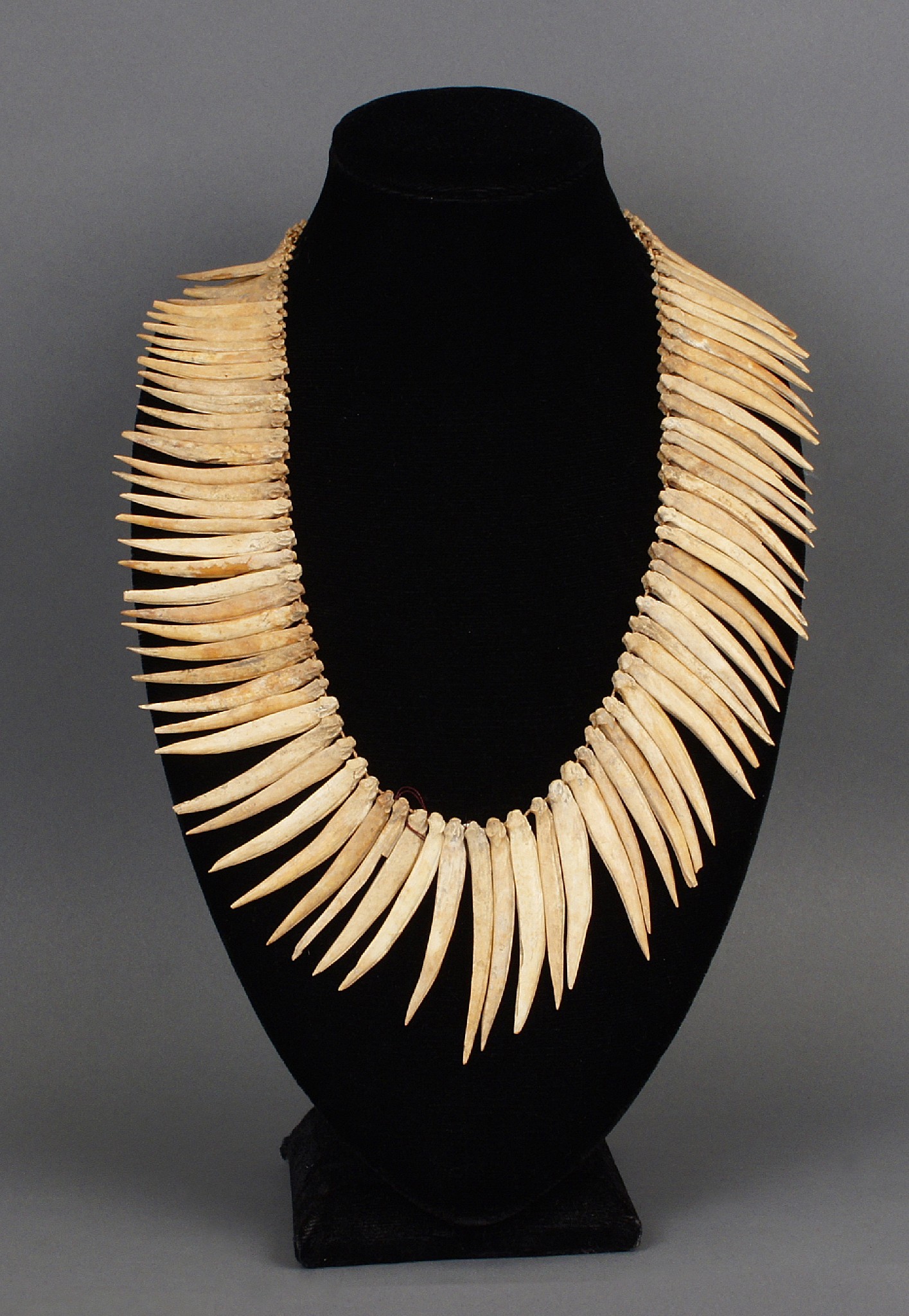
Dominican Republic, Taíno Pez Espina Fish Teeth Necklace
A necklace of almost 90 snake fish bones, each with a perforated hole on top for stringing. The stringing is contemporary, copied from 16th Century European lithographs.
Period: Dominican Republic, c. AD 1000 - 1500
Media: Other
Dimensions: Length 14"
$1,800
94301
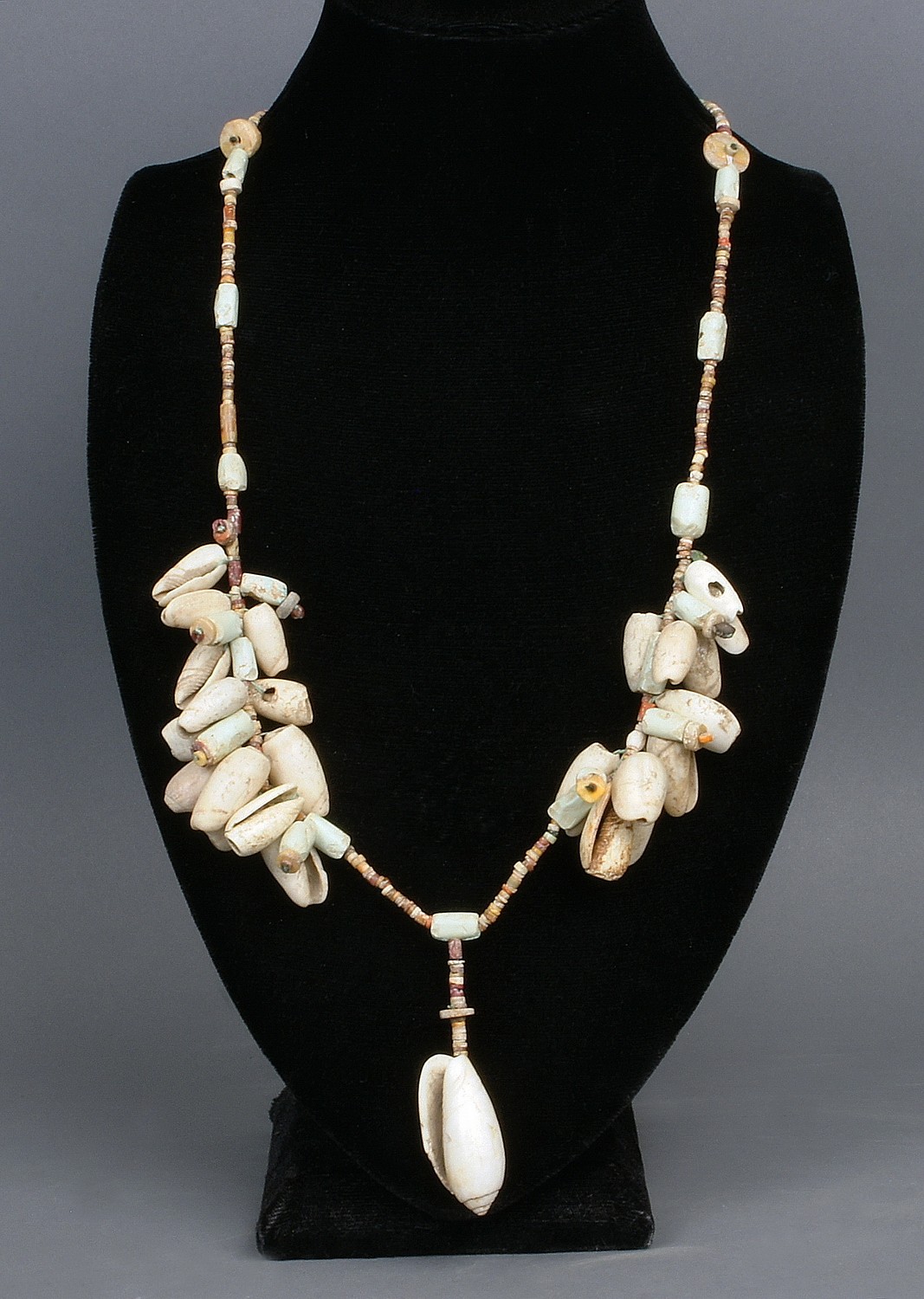
Dominican Republic, Taino Stone and Shell Necklace
This necklace has an assortment of stone and shell beads put together to give the viewer a sense of what ancient TaÃno necklaces would have looked like as worn by chiefs. Only chiefs were allowed to wear necklaces of stone beads, which are featured in the creation story as documented by Columbus' missionary, Fra Ramón Pané.
Period: Dominican Republic, Taíno, c. AD 1000 - 1500
Media: Shell
Dimensions: Length: 28"
$1,800
99375
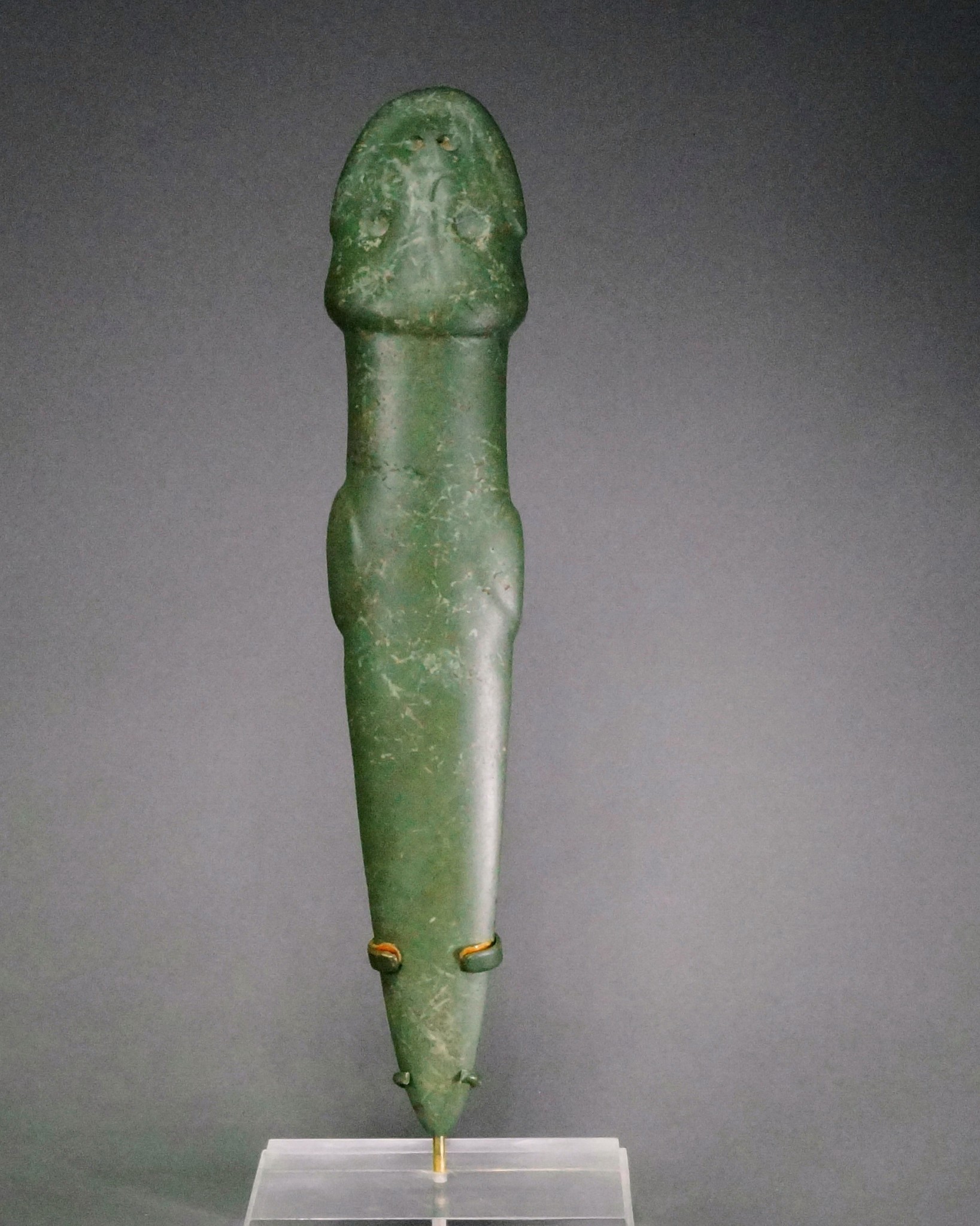






Dominican Republic, Taino Stone Ceremonial Dagger in the Form of an Iguana
A ceremonial dagger that is carved exceptionally well, with original polished surface, depicting lizard characteristics such as a long snout, prominent nostrils and deep set eyes. The back depicts a defined jaw and hind legs pulled up into the body. There are only 2 similar shaped daggers that are illustrated: One in Estudio de Las Hachas Antillanas, page 143, and and one in L'ART DES SCULPTEURS TAINOS: Chefs-d'oeuvre des grandes Antilles Précolombienes, Paris 1994, plate 86. There are also two similar daggers in the Arivelo collection in Santo Domingo that are inferior and crudely sculpted.
Period: Dominican Republic, Taino, c. AD 1000 - 1500
Media: Stone
Dimensions: Length: 11"
Price Upon Request
n8016

